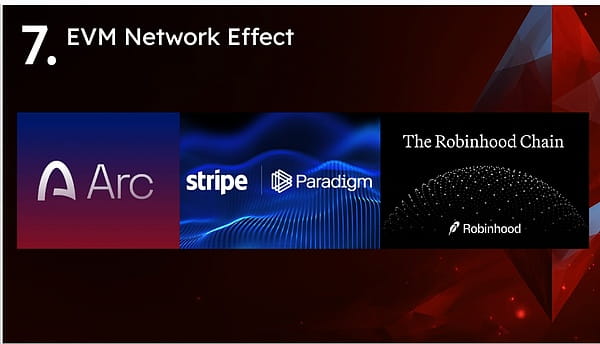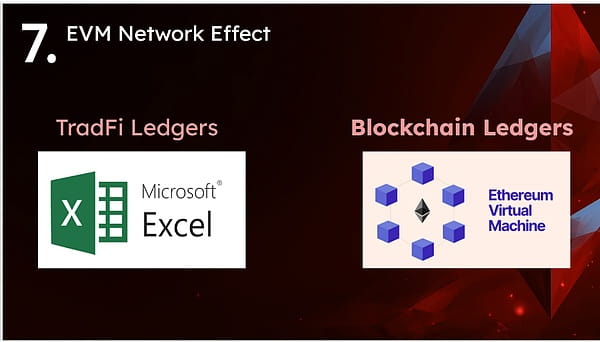Author: David Hoffman, Co-founder of Bankless; Translation: Jinse Finance Xiaozou
This week's crypto topics revolve around Circle and Stripe sequentially announcing enterprise-grade L1 blockchains.
The new L1 network Arc launched by Circle is a permissioned chain compatible with EVM, operated by a consortium of 20 regulated authoritative institutions serving as validation nodes.
The L1 that Stripe is building is likely to use Paradigm's RETH client—this is a high-performance Ethereum client written in Rust. Paradigm founder Matt Huang serves on Stripe's board and likely provided significant technical support for this Stripe chain named Tempo.
The discussions in the crypto community this week can basically be summarized as: 'Is this good or bad for the crypto industry? What impact does it have on my holdings?'
Personally, I find permissioned L1 extremely dull. In my view, the core value of the crypto space and the 'main storyline' has always been open-source software, with Ethereum at the center of this story.
The construction of enterprise-grade L1 is far removed from the main storyline of the crypto world, even appearing completely irrelevant. For Circle and Stripe, blockchain technology is merely used as a database architecture—nothing more.
Will Arc and Tempo mint L1 native assets?
If they choose to do so, it indicates an intention for network decentralization—such chains would start moving in a direction that interests me. However, without more supporting data at this moment, a reasonable assumption is that neither chain will issue L1 assets and will only serve as private intranets behind front-end applications to handle stablecoin settlements.
There is a hard rule in the crypto space: any project that can issue tokens... will eventually issue tokens (I'm talking about you, Base), so completely ignoring this possibility is also overly naive. If these enterprise-grade L1s do indeed issue tokens in the end, it means they are taking a step toward an open-source decentralized developer platform—in my view, this is closer to the main storyline of the crypto world.
Will Stripe and Circle try to attract developers to build ecosystems on their own chains?
Will developers be willing to build on someone else's territory?—in a situation where there are no returns and no partial ownership of this territory? Stripe already has a large developer community... but that community consists of Web2 developers building Web2 front-ends and e-commerce websites. Can this convert into motivation for Web3 developers to build on Tempo? Will the value of development on Tempo exceed the value of building the same things on Ethereum or any of its L2s?
Perhaps these chains will ultimately be lifeless permissioned consortium chains, lacking L1 native assets, merely serving as business logic backends to replace their own settlement networks for Visa, Mastercard, and Swift.
All these questions are still inconclusive, so I think it's premature to debate whether 'this is beneficial for BTC, ETH, SOL, or the entire crypto industry'.
But the undeniable fact is that these enterprise-grade L1 chains are beneficial to the Ethereum Virtual Machine (EVM).

It all started with Robinhood Chain, which set a precedent for traditional financial companies to build and own EVM instances. Robinhood has hired EVM developers, and EVM has now become central to its business. Today, we can add Circle and Stripe to this list—these traditional financial companies are also hiring and managing EVM talent, integrating them into their corporate structures.
Therefore, the core conclusion is: every traditional financial company venturing into the crypto space needs to recruit EVM developers, viewing EVM as the entry ticket for upgrading backend logic to the blockchain era.
Just as Microsoft Excel drives traditional financial operations, the Ethereum Virtual Machine (EVM) is becoming the new ledger software that Wall Street must equip itself with—only then can it maintain market share and avoid being disrupted by innovations from the Ethereum ecosystem.

Once you truly delve into Ethereum's 'rabbit hole', you will realize that all roads ultimately lead to the value capture of ETH. Although these roads may seem mild and indirect, the expansion of the EVM empire will eventually bring value appreciation to this asset at the core of EVM.



